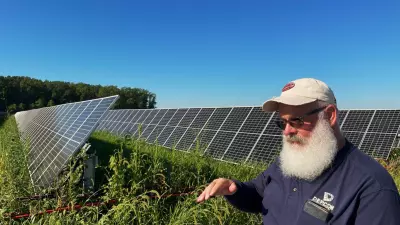Solar farms could be the next cash “crop” in Postindustrial America — but not near Thomas Newhart’s farm if he can help it.

Newhart loves the view from his farm in Mount Joy near Gettysburg with its 10 miles of rolling hills and Little Round Top, the site of a pivotal battle between Union and Confederate soldiers during the Battle of Gettysburg in 1863.

“This proposed project is mind-boggling. I mean, what are we doing?”
— Thomas Newhart

If the solar project there goes through, that view would be obscured by an eight-foot-high barbed wire fence, and 12-foot high solar panels, 50 feet from his property.
It would be one of the largest, if not the largest, utility-scale solar farms in Pennsylvania.
“This proposed project is mind-boggling. I mean, what are we doing?” Newhart said.
Once home mostly to the sunny South and West, large-scale solar installations now are also found in the less-sunny regions of Postindustrial America. The rush is happening as the Biden administration pushes to use more renewable energy.
President Biden set a goal of having 100% renewable energy in the power sector by 2035. That means that more governments, businesses, and other institutions are looking for so-called “cleaner energy” sources.
For landowners, it can seem like a win-win: Rural communities throughout Postindustrial America are rich with swaths of land on which developers are paying owners per-acre fees to place solar panels.
“It’s a little bit like the Wild West,” said Sharon Pillar, founder and director of the Pennsylvania Solar Center, a Pittsburgh nonprofit that assists nonprofits and businesses, and works on policy and education issues.
Companies are paying $800 to $1,200 per acre, per year for leases that run 20 years or longer, she said. That’s more than property owners would get from using the land for farming or grazing.
Biden set a goal of having 100% renewable energy in the power sector by 2035. That means that more governments, businesses, and other institutions are looking for so-called “cleaner energy” sources.
In Pennsylvania alone, there are 312 proposed solar projects on the grid that guides electricity flow to 65 million people in 13 states and the District of Columbia.
Only a fraction of these projects in grid operator Audubon, Pa.-based PJM Interconnection’s queue will come to fruition.
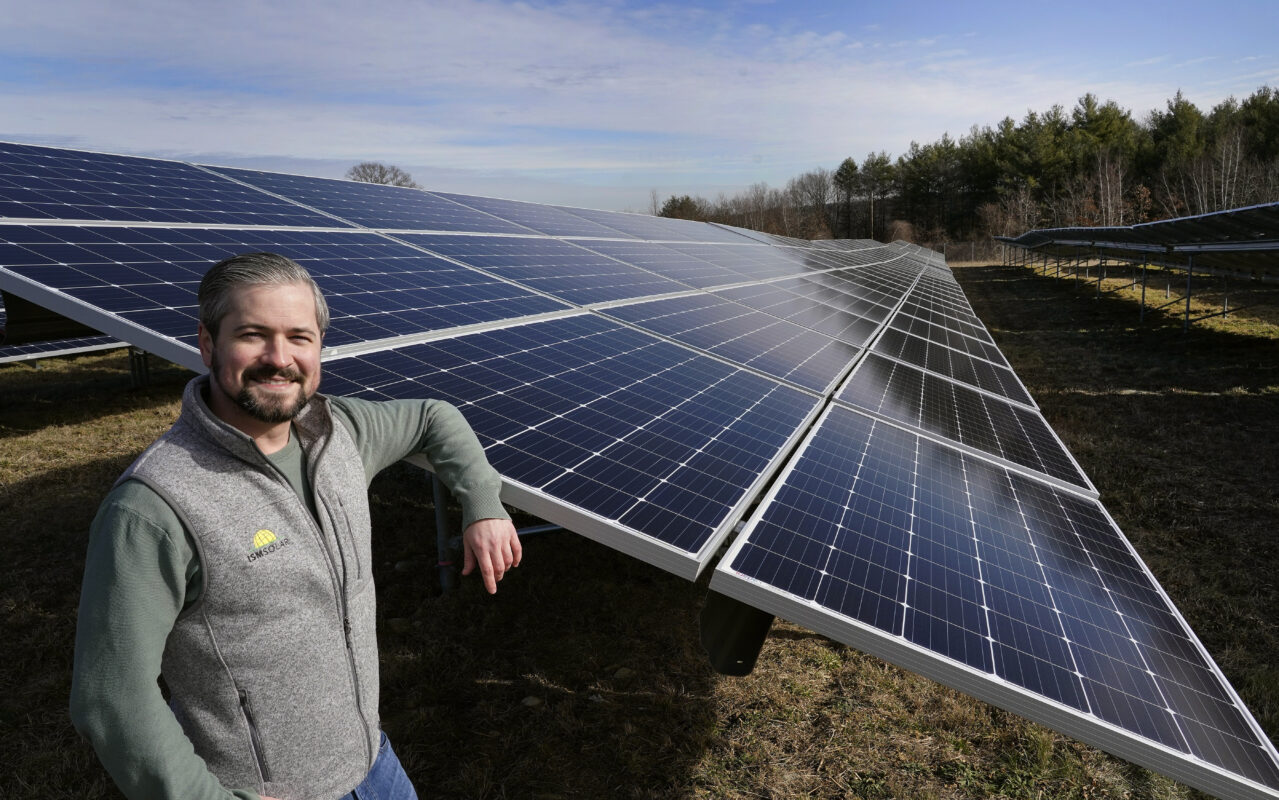
Not all projects are welcomed by residents, as in Newhart’s case.
Florida-based NextEra Energy Resources’ plan to build a solar farm on 1,000 acres in Mount Joy Township, Adams County, ran into fierce opposition from hundreds of residents.
Earlier this month, township supervisors, in a 2-2 vote, rejected a conditional use permit for the 75-megawatt Brookview Solar project. NextEra can appeal the supervisors’ decision, and is evaluating options, said spokesperson Lisa Paul.
Clayton Wood’s family planned to lease their property to NextEra for the solar farm. His family owns and farmed a nearly 200-acre area in Mount Joy for generations — but he couldn’t, economically, make farming work in Pennsylvania. He now lives in New York where he has a dairy farm.
“It’s frustrating to me that my neighbors’ concerns dictate to a degree what we can and can’t do on our property,” said Wood, who emphasized that the family land holds great sentimental value.
Attorney Nathan Wolf, who represents several property owners opposed to the project, said his clients aren’t against solar power as much as they believe this particular solar farm “was too large, too intense for a rural community that has a unique and specific place in history.”
That “specific place” is its proximity to Gettysburg, one of the most revered sites of the American Civil War.
“A lot of the Union army marched through our farm and the fields around it,” Newhart said.
He owns a 65-acre farm, where he raises Black Angus cattle and also runs the Iron Horse Inn, a bed-and-breakfast.
Newhart vowed he and those allied with him have no plans to give up their fight, either. “This has cost us all a pretty penny, but we are committed to keep the battle going,” he said.
But the growing number of projects demonstrate how popular — and potentially lucrative — utility-scale solar can be for some people.
“I don’t think any of my clients are blind to the economic realities of what solar farming is about,” Wolf said.
The federal government offers a 26% tax credit for solar projects, and businesses also are allowed to depreciate the cost of the entire project in the first year, Pillar said. Other incentives vary from state to state.
One reason for the boom is that the technology got better and cheaper, making it a more lucrative industry in which to invest.
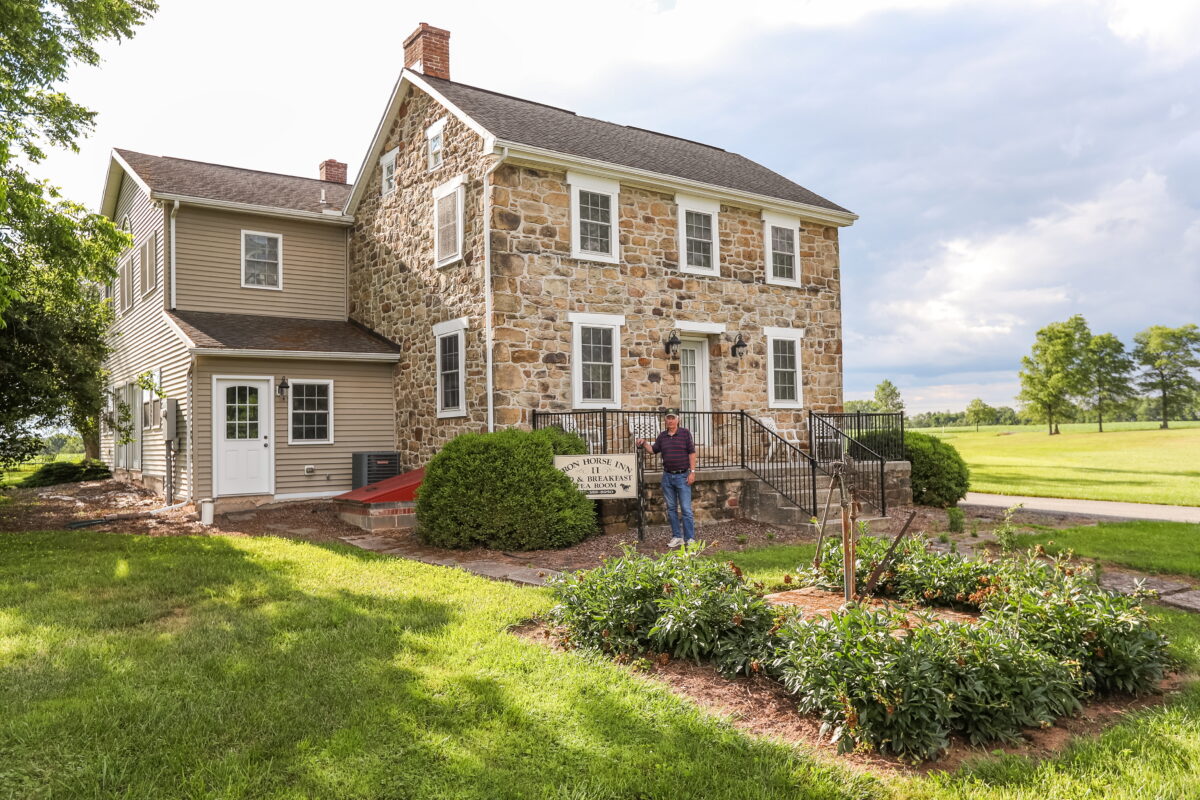
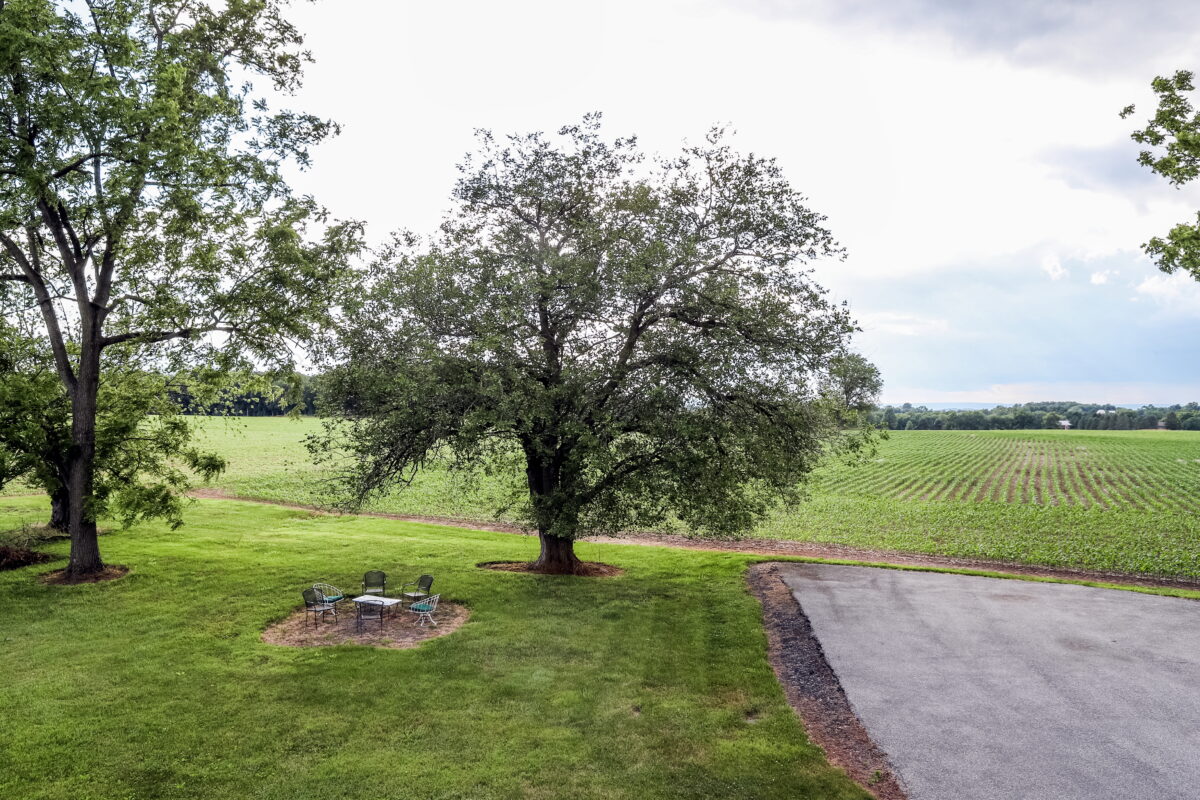
“We have seen the price drop with more adoption of the technology,” Pillar said. “Just as we have seen with cell phones and computers, there are higher efficiencies in the manufacturing. Panels have gotten more efficient; they are doubling or tripling the energy in the same amount of space.”
And now, states require that a certain percentage of electricity come from renewable energy.
A 2004 law calls for Pennsylvania to get 8% of its electricity from renewable energy, including 0.5% from solar. A new, ambitious proposal calls for 10% of electricity to come from in-state solar energy by 2030.
There are currently fewer than 10 utility-scale solar projects in Pennsylvania.
In comparison, Massachusetts requires 8.5%, New Jersey, 3.8%, and New York, 1%, according to Pennsylvania’s Solar Future Plan.
“If we are going to transition to more alternative energy, it will take time, and we will have to keep other energy sources — nuclear, fossil fuels. We will have to keep them for decades to reach some of these goals.”
— Dan Brockett, an educator at Penn State Extension
An increase to 10% would probably require 70,000 to 80,000 acres of solar panels, said Dan Brockett, an educator at Penn State Extension.
“That presents a potential challenge and opportunity for this kind of solar development,” he said.
In North Carolina, one of the biggest producers of solar energy, landowners were paid as much as $1,400 per acre, per year for prime land, and the highest rent found for farming was about $200 per acre — in many cases, it’s $80 to $100 per acre, said
Ron Heiniger, professor of agricultural cropping systems at North Carolina State University.
This leads to solar projects being built on prime farmland, instead of tracts less amenable to growing crops and vegetables, he said.
“It’s not a sustainable approach to green energy, that we were actually taking out plants and crops that were fixing the carbon footprint and replacing them with these panels in the hopes they will reduce carbon,” he said.
Other environmental issues, such as soil erosion, also can be a problem, he said.
Pillar points to plants and grass planted between panels to alleviate such problems. But Heiniger, a crop and soil scientist, insists “the data of water runoff has been poorly researched or not examined at all.
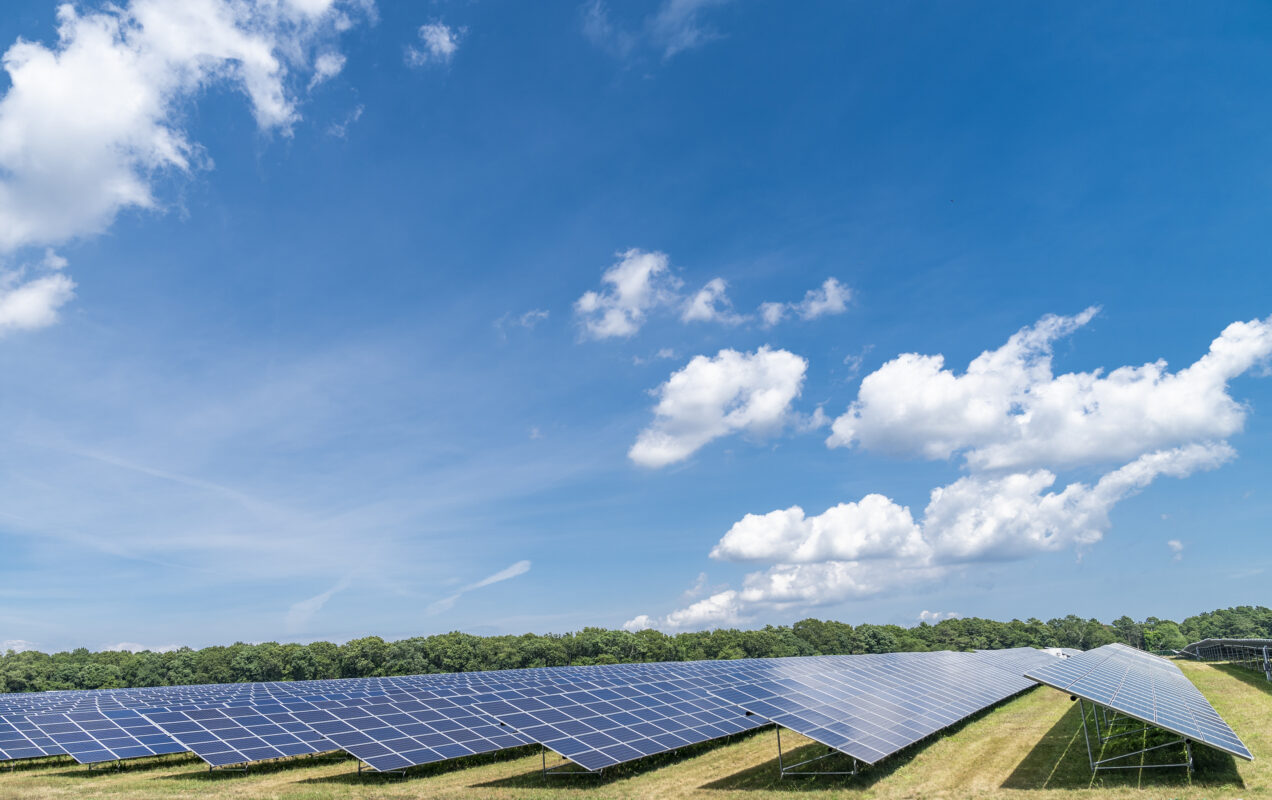
“We’ve had a number of complaints from adjacent landowners who are complaining their lands are wetter — they have water standing in their property.”
Water runoff can be stronger on solar farms, depending on the slope, said Heiniger.
“They tell you they’re planting grass, and, yes, they do. But the problem is there is so much velocity of water, it gets under the grass and carries soil particles with it. In some areas, like Pennsylvania, with rolling terrain, that difference becomes great. Just a slight slope creates more water velocity.”
Heiniger said he does not oppose solar energy, but “enhance your good acres and try to convert your poorer acres into solar farms.”
“That way, you can keep your food supply and have solar energy. That’s what your goal is,” he said.
In Pennsylvania, the state has “one of the more robust farmland preservation programs in the county,” Pillar said. “Our most productive farmland would not be able to convert to solar farms.”
She pointed to a U.S. Department of Agriculture census that said more than 6,000 farms in Pennsylvania closed between 2012 and 2017, and said that utility-scale solar can be viewed as a means to preserve farmland.
And even if Pennsylvania adopts a plan of getting 10 percent of its electricity from solar power by 2030, that still leaves 90 percent to be obtained by other means.
“There’s no perfect energy,” Brockett said. “When we try to paint this as heaven-and-hell scenarios, we are probably making a mistake.
“If we are going to transition to more alternative energy, it will take time, and we will have to keep other energy sources — nuclear, fossil fuels. We will have to keep them for decades to reach some of these goals.”






